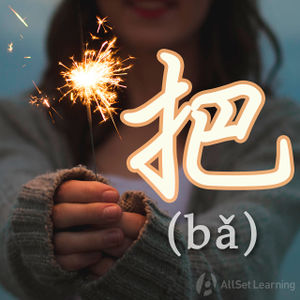Difference between revisions of "Verbs followed by "gei""
| Line 23: | Line 23: | ||
<div class="liju"> | <div class="liju"> | ||
| − | *昨天 有人 <em>送给</em> 我 一 束 花 。<span class="pinyin">Zuótiān <em> | + | *昨天 有人 <em>送给</em> 我 一 束 花 。<span class="pinyin">Zuótiān <em>sònggěi</em> yī shù huā.</span><span class="trans">Someone gave me a bouquet of flowers.</span> |
*请 <em>递给</em> 我 一 盒 纸巾 。<span class="pinyin">Qǐng <em>dìgěi</em> wǒ yī hé zhǐjīn.</span><span class="trans">Please pass me a box of tissues.</span> | *请 <em>递给</em> 我 一 盒 纸巾 。<span class="pinyin">Qǐng <em>dìgěi</em> wǒ yī hé zhǐjīn.</span><span class="trans">Please pass me a box of tissues.</span> | ||
*这是 我们 <em>送给</em> 你的 生日礼物 。<span class="pinyin">Zhè shì wǒmen <em>sònggěi</em> nǐ de shēngrì lǐwù.</span><span class="trans">This is your birthday present from us.</span> | *这是 我们 <em>送给</em> 你的 生日礼物 。<span class="pinyin">Zhè shì wǒmen <em>sònggěi</em> nǐ de shēngrì lǐwù.</span><span class="trans">This is your birthday present from us.</span> | ||
Revision as of 07:13, 30 September 2018
-
Level
-
Similar to
-
Used for
-
Keywords
Although it's standard practice to put a word or phrase that modifies a verb before the verb, there are, of course, exceptions. 给 (gěi) is one of those exceptions; it sometimes comes before the verb, and sometimes after. This article is about when it comes after.
Contents
Basic Pattern
Structure
Note that the verbs that fit into this pattern are normally single-syllable verbs.
Subj. + Verb + 给 + Recipient + Obj.
or
Obj. + Subj. + Verb + 给 + Recipient
Examples
- 昨天 有人 送给 我 一 束 花 。Someone gave me a bouquet of flowers.
- 请 递给 我 一 盒 纸巾 。Please pass me a box of tissues.
- 这是 我们 送给 你的 生日礼物 。This is your birthday present from us.
- 这本书 是 谁 借给 你 的 ?Who lent you this book?
- 邮件 我 已经 发给 你 了 。I sent you that email already.
Advanced Pattern
Structure
Additionally, you can add 把 into this structure. This does not change the meaning of the sentence and when used in context can even add emphasis to what's being done and given.
Subj. + 把 + Obj. + Verb + 给 + Recipient
Examples
- 你 想 把 这个 礼物 送给 谁 ?Who are you going to give this present to?
- 请 把 那些 照片 都 发给 我 。Please send all of those pictures to me.
- 我 已经 把 车 卖给 了 一 个 朋友 。I've already sold my car to a friend of mine.
- 请 把 盐 递给 我 ,谢谢 。Please pass me the salt. Thanks.
- 可以 把 这 本 书 借给 我 吗 ?Could you please lend me this book?
Note that the verb 嫁 (jià) cannot fit into the 把 pattern above; it's an exception.
- 她 嫁给 了 一 个 有钱 的 老头 。 She married a rich old man.
If you really want to make a 把 sentence, though, you can do this:
- 她 爸爸 把 她 嫁给 了 一 个 有钱 的 老头 。 Her father married her off to a rich old man.
Academic Debate
Although 给 phrases should normally precede a verb like any other prepositional phrase, they sometimes come after. Why have it both ways? There is some academic debate over whether this 给 is actually a preposition or a type of verb (often called a "co-verb"), or even a type of complement. This type of discussion is outside the scope of this article, however.
See also
- Expressing "for" with "gei"
- Verbs preceded by "gei"
- Advanced uses of "ba"
- Expressing "for" with "wei"
- Expressing passive voice with "gei"
Sources and further reading
Books
- 现代汉语虚词例释 (pp. 196) 卓越汉语-公司实战篇 →buy
Dictionaries
- 现代汉语词典(第5版) (pp. 464) 卓越汉语-公司实战篇 →buy



